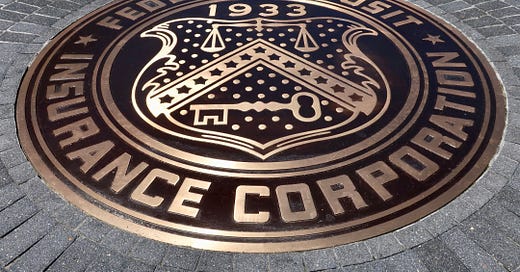Part II: Stay away? Or come out and play?
SEC legal action against Binance and Coinbase is another signal for traditional financial institutions
Welcome to Part II of our commentary on the SEC’s legal actions and the implications for banks and credit unions. Part I brought to light the cryptocurrency market’s need for regulatory clarity, considering the lack of consumer protection by non-bank entities operating in the space. A clear solution emerged: community banks and credit unions, that have a trusted and robust regulatory and compliance framework.
This article will discuss the notable challenges and market conditions small financial institutions (FIs) face in the post-pandemic era.
The need for community banks and credit unions to remain relevant in a world that is trending digital makes cryptocurrency and the digital asset space a compelling opportunity.
Financial institutions require capital to drive revenue and make a profit. Banks and credit unions operate under the assumption that customer deposits, while technically available for withdrawal at any time, tend to remain in the bank for the long term, providing a stable and reliable funding source. With net deposits being negative for many community banks and credit unions, these smaller institutions are closely monitoring the following threats:
Digital Divide - People seek out products and services that provide them with the most perceived value. The big banks have massive technology budgets that lead to highly sought-after solutions and innovation. Regional and community FIs don’t have the same luxury and often lose customers due to significant product gaps.
Fighting FinTech - Pure-play digital wallet services like Cash App and Venmo are magnets for depositors, offering superior digital experiences with access to payment cards, stocks, bitcoin, loans, etc. Upstarts continue to disintermediate core banking services from incumbent banks.
Fed Risk - The inversion of the yield curve is putting a strain on profitability. In more ways than one, recent challenges from the Fed’s unprecedented, fast increases in short-term interest rates pose risks to the very financial system the Fed is purported to protect.
Go Big - When the next round of bank failures occurs, the perception is that smaller banks may not be afforded the same level of protection by the Federal Deposit Insurance Corporation (FDIC)1. This results in deposits flowing to banks that are thought of as too big to fail (Global Systemically Important Banks or G-SIBs). Moreover, customer deposits are leaving smaller FIs for higher-yielding government money markets.
Opt-Out - Many are hedging against bank failures and the financial system as a whole. Excessive government spending and money printing are on Americans’ minds. Additionally, fractional reserve banking hasn’t been this front and center in the public consciousness since the (Glass-Steagall) Banking Act of 1933, which established the FDIC. A growing number are opting to store their wealth 'outside' the traditional financial system in digital assets. In doing so, customers willingly surrender personally identifiable information (PII) and send money to unregulated non-banks to buy cryptocurrency.
[Ray Dalio]. (2022, March 2). Principles for Dealing with the Changing World Order [Video]. YouTube. 1 minute 41 seconds. Click here to watch the full video.
These macro trends represent significant headwinds for community banks and credit unions in a time when profitability, and sometimes solvency, is in question. No financial institution is immune to the compounding of the aforementioned hazards.
Operating under such a negative backdrop is not easy for leaders of financial institutions today, but let’s face it, these problems existed before 2020. The difference now for banks and credit unions is that there is an entirely new monetary system that more and more people are voting for with their dollars2.
This emergent system operates in a regulatory gray area. While good businesses do exist in the space, unscrupulous profiteers have been allowed to run amok without the proper oversight in place. Until recently, lawmakers and regulators have mostly sat on the sidelines, permitting these activities to take place.
Likewise, many FIs want to punt, occupied by the uncontrollable macro trends and pressures (bulleted above). Bankers, understandably, have mostly ignored Bitcoin and digital assets due to the perceived risks associated with the industry. The actual risk, paradoxically, may be in taking no action at all. Remember, 136 banks are preparing for the next phase of some kind of crypto-asset activity or digital asset adoption.
In 2021, then FDIC Chair, Jelena McWilliams, signaled as much when she offered, “I think that we need to allow banks in this space, while appropriately managing and mitigating risk.” She went on to say, “If we don’t bring this activity inside the banks, it is going to develop outside of the banks. … The federal regulators won’t be able to regulate it.”
The strong regulatory and compliance foundation on which banks and credit unions stand offers an ideal environment for these activities. Safe and sound crypto-asset services for the benefit and protection of consumers are never more needed than now.







